The Ultimate Comparison Guide of all The Materials You Can Print.
updated on 2/15/2016
The world of 3d printing is vast, growing and sometimes intimidating. With dozens of different plastic types ranging from your basic ABS (think Lego bricks) to advanced, more exotic materials, the landscape can be quite daunting if you’re just starting out. That’s why we hope to provide you some insight with this visual guide to 3d printing materials, and compare the different types you may encounter in your journey as a maker. The motto for 3d printing might as well be “experimentation is key,†but we hope to take out some of the guesswork for you.
While the growing number of filament types is hard enough to wrap your head around, each 3d printer has its own quirks, needs and specifications, meaning some materials don’t work with some printers, or will require special upgrades to allow for proper extruding. We’ll analyze each material, compare their strengths and weaknesses, and then list the 3d printers we know to work well with that particular filament type.
Ok, let’s get started!
Standard Materials
ABS (Acrylonitrile Butadiene Styrene)
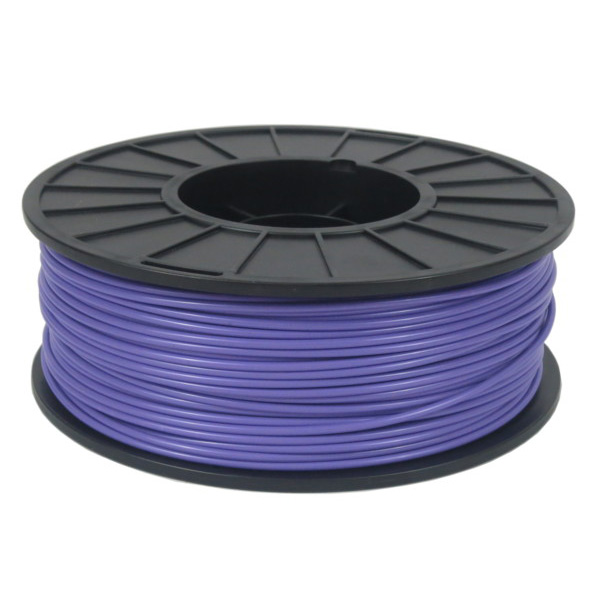 Ah… ABS. The tried and true plastic that never goes out of style. It’s shiny, has bold colors and it’s strong. ABS stands for Acrylonitrile Butadiene Styrene – yeah, no wonder they made an acronym for it. While it’s one of the most commonly used materials for 3d printing, it’s equally as prominent in commercial applications, spanning from games and toys such as the fabled Lego bricks, to kitchen gadgets, sports gear such as golf clubs, pads and helmets, automotive details, cases, electronics etc. Basically it’s everywhere and a popular injection molding plastic.
Ah… ABS. The tried and true plastic that never goes out of style. It’s shiny, has bold colors and it’s strong. ABS stands for Acrylonitrile Butadiene Styrene – yeah, no wonder they made an acronym for it. While it’s one of the most commonly used materials for 3d printing, it’s equally as prominent in commercial applications, spanning from games and toys such as the fabled Lego bricks, to kitchen gadgets, sports gear such as golf clubs, pads and helmets, automotive details, cases, electronics etc. Basically it’s everywhere and a popular injection molding plastic.
Why is it so popular?
ABS is a very durable plastic with good shock absorption and a little flex. It’s also fairly heat resistant, meaning it won’t melt until it hits around 221°C. These qualities make it quite adaptable for many uses. Another benefit to using ABS is its price. The average price of a spool is roughly $30, making ABS one of the more affordable materials to print with.
Tips for printing ABS
Depending on your printer, print at a temperature between 220-235°C. Unfortunately, ABS can be a little tricky to print with, so if you’re a beginner, we suggest trying PLA first, as it’s more forgiving. ABS can warp as it cools, so external temperatures in the room may affect the end result of your print. We suggest using a heated bed to avoid warping and maximize layer adhesion. Also, a printer with a closed hood will help regulate the temperature. We should also mention that when melted, the plastic emits an unpleasant odor, which can be harmful to breathe for extended periods of time. Therefore, you should ideally print with a ventilation hood attached to the printer or print in an environment with lots of air flow. Another thing to keep in mind, spooled ABS can collect moisture from air, so if you’re planning to store it over a longer period of time, keep it sealed in an airtight container, or utilize a vacuum sealed Space Bag. Moisture in the filament can cause popping and uneven prints.
Post Processing
ABS can be sanded, cut, painted and glued. Another neat aspect to ABS is the ability to create a glossy finish with acetone after the printing is done. It’s called an “acetone bath,†which essentially involves enclosing your print in a box, with a small amount of liquid acetone inside as well (the acetone should not be touching the print). The vapors from the acetone will slowly melt the plastic and give it a beautiful glossy shine. The longer you leave your print in the bath, the smoother but less detailed it will become.
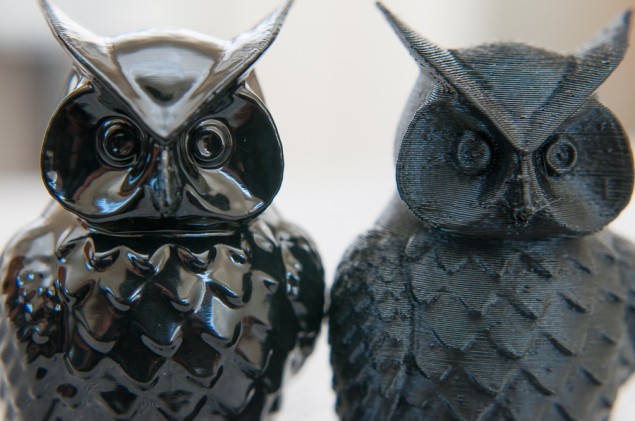
Image credit: Sink Hacks
Cost
Low Ranges from $25-40 depending on quality.
Print Settings
Extruder Temp: 220-235°C. Bed Temp: 80-110°C. Bed Adhesion: Kapton/Hairspray
Overall Review
When you need a good, strong, cheap plastic, go with ABS. Just be prepared to work out some kinks first.
PLA (Polylactic Acid)
 PLA, or Polylactic Acid, is one of the most commonly used materials for 3d printing, and is considered the favorite these days. This is due to its ease of use, affordability, and biodegradability. It’s also a non-toxic material. Many people prefer it over ABS simply due to the fact that it doesn’t emit any harmful or unpleasant odors. It is created from natural resources like sugar cane, tapioca root and corn starch, making it renewable and environmentally-friendly!
PLA, or Polylactic Acid, is one of the most commonly used materials for 3d printing, and is considered the favorite these days. This is due to its ease of use, affordability, and biodegradability. It’s also a non-toxic material. Many people prefer it over ABS simply due to the fact that it doesn’t emit any harmful or unpleasant odors. It is created from natural resources like sugar cane, tapioca root and corn starch, making it renewable and environmentally-friendly!
PLA is used in the medical sector for surgical implants, mesh, rods and sutures to leave in the body. Over the span of a year or so, the polymer breaks down into lactic acid and dissipates in the body. It’s also used in packaging for food, disposable cups and other commercial products.
Qualities
This filament is rigid and fairly tough, but more brittle than ABS. When printed, it emits a sweet smell akin to syrup, and can be printed safely indoors. Generally speaking, PLA printed parts have a speckled, glossy finish to them. The plastic is available in a wide variety of colors and opacities, and is more recently being combined with other materials, such as wood and metals to create more exotic textures.
Printing with PLA
Print PLA at a temperature ranging from 195°C to 220°C. When calibrating your extruder height, a good rule of thumb is to slip a business card between the nozzle and the bed. This material has a very low warping potential, meaning you don’t need to use a heated bed, although it can help to avoid any curling on the edges of your part. When PLA is printed it melts into a very liquid form, allowing for greater layer binding and more detail than ABS. We recommend running a fan to cool the layer immediately after extrusion. This will mean sharper corners and fine details in the print.
It’s common to use blue painters tape for the print bed surface, particularly with PLA. This is sufficient to for creating a solid first layer. Keep in mind you should NOT heat the bed when using tape. This will decrease the amount of adhesion. PLA will start to get soft at around 75°C (167°F), so keep that in mind when deciding whether it’s the right material for the job.
Cost
Low Ranges from $25-40 depending on quality.
Print Settings
Extruder Temp: 180-220°C. Bed Temp: 20-55°C. Bed Adhesion: Blue Painter's Tape
Overall Review
PLA is a fantastic material for most gadgets and parts, and is very easy to print with. Unless you need something more durable, PLA will likely be your go to filament.
Support Materials
Support materials are a fantastic resource at our disposal that allow you to print overhangs and shapes that would otherwise be impossible. Imagine the opening of a cave, with the ceiling stretching flat above it with nothing underneath. A 3d printer would not be able to create the flat surface – the molten plastic would just cave in. Hey, if you’re lucky it might just look like some stalactites. But with dissolving materials we can control this.
HIPS (High Impact Polystyrene)
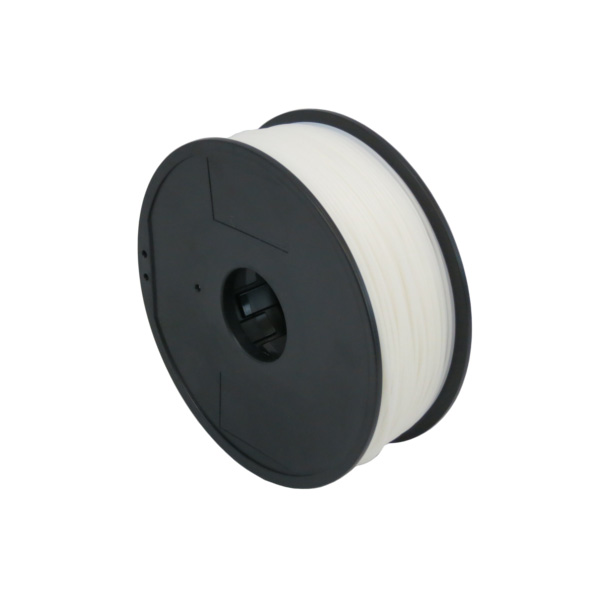 This material is often used in conjunction with ABS, because the two share similar qualities. This means that printing with a dual-feed system will not require cooling or any special treatment. The great thing about HIPS is it can be dissolved with Limonene. This is its primary function.
This material is often used in conjunction with ABS, because the two share similar qualities. This means that printing with a dual-feed system will not require cooling or any special treatment. The great thing about HIPS is it can be dissolved with Limonene. This is its primary function.
However, there are some things to note here about support or “dissolving†materials in general. They’re not perfect, and they don’t actually dissolve. Really, the molecules are breaking apart and loosening the plastic into gooey soft blobs. In some cases this will require you to brush off or shake the desired part to fully clean it. HIPS should dissolve within 2-3 hours but can take up to a few days, depending on the complexity of your part.
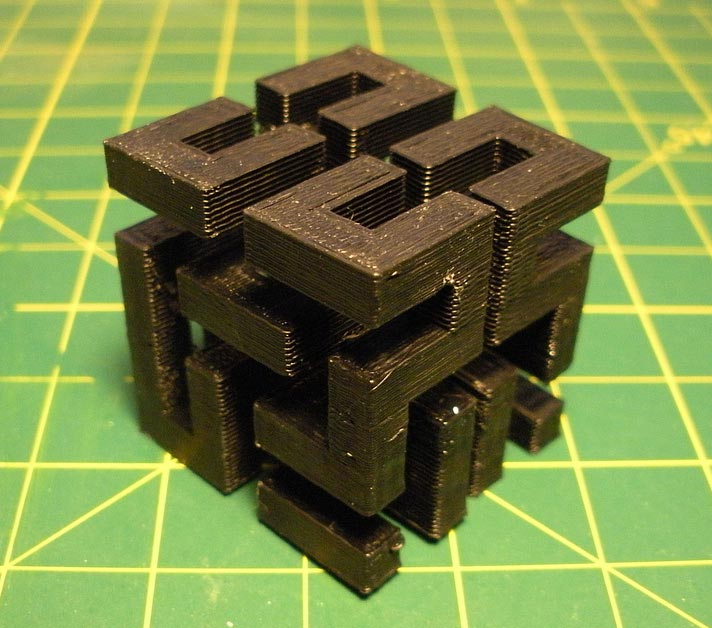
Cost
Low Ranges from $25-40 depending on quality.
Print Settings
Extruder Temp: 220-230°C. Bed Temp: 50-60°C. Bed Adhesion: Kapton Tape/Hairspray
Overall Review
HIPS is a great choice if you're used to printing with ABS. It acts very similarly and has even less warp. The fact that it's solvent is limonene makes it less convenient that PVA, but it's still a good choice in many situations, and can even serve fine as a standalone filament.
PVA (Polyvinyl alcohol)
PVA is a very popular support material because of its ability to dissolve in water. Unlike HIPS, there's no need for any potentially harmful chemicals. Just simply soak your finished parts in water and your supports will soon break away. While the time it takes to break down the support will vary based on the complexity of the print, the molecular breakdown happens quite quickly. Once the part has been adequately soaked, you may need to hold it under running water to free some the goopy bits and give it a final soak. In fact, if you hold it in a sink you should have a clean print in minutes. Here's a video that shows off the fantastic potential of PVA filament:
Strong Materials
Nylon
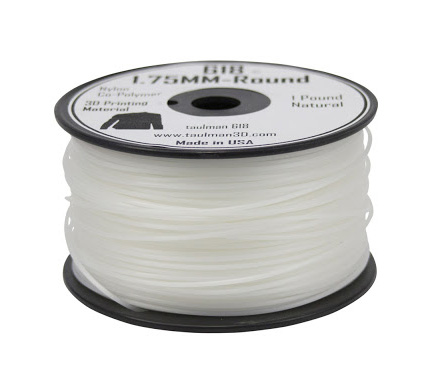 Nylon is one of the most commonly used materials in the world, and can be found in any number of household items, fabrics and even medical sutures. Nylon is actually a term we give to a family of plastics called polyamides, each very similar but with different specialties. You might find strands of Nylon fibers in your clothing, in the strands of your toothbrush, or simply formed into a plastic item like a clock or bowl. As versatile as Nylons are, they are also strong. The reason being is the shape of molecule form long chains that interlock, like fibers. The material is exceptionally smooth, making it a great choice when you need your prints to move without friction.
Nylon is one of the most commonly used materials in the world, and can be found in any number of household items, fabrics and even medical sutures. Nylon is actually a term we give to a family of plastics called polyamides, each very similar but with different specialties. You might find strands of Nylon fibers in your clothing, in the strands of your toothbrush, or simply formed into a plastic item like a clock or bowl. As versatile as Nylons are, they are also strong. The reason being is the shape of molecule form long chains that interlock, like fibers. The material is exceptionally smooth, making it a great choice when you need your prints to move without friction.
Nylons are lighter but much stronger than ABS or PLA. And when printed there are no odors, only water vapor that occurs from moisture in the plastic. In the world of 3d printing, Nylon filament is typically found in two types, Nylon 618 and Nylon 645, though there are newer versions like 230, which doesn’t require a heated bed, 680 (an FDA approved, medical-grade plastic), and Taulman Bridge, which is easy to print and as strong as 645, for a fraction of the price. We know, lots of numbers, so let’s break them down:
Nylon 618 is very easy to print with on almost every 3d printer, and results in white, slippery surface. Since it only comes in this natural color, it is very common to use clothing dyes to color your finished parts. Like all Nylon, it’s super tough. Go ahead, hit it with a hammer.

Nylon 645 is more transparent than 618, and has slightly more pronounced capabilities insofar as smoothness, strength and clarity. It should be printed at 245°C on top of blue painter’s tape, a sheet of poplar wood, or even a nylon surface if you have it. It’s a really impressive material, ideal for functional parts like bearings and gear
As it can absorb water from the air within 18 hours, make sure to store your Nylon filament in an airtight container with silica gel or in a vacuum sealed bag when not in use.
Cost
Low Ranges from $25-70 depending type.
Print Settings
- Extruder Temp: 240-260°C.
- Bed Temp: 75°C.
- Bed Adhesion: Blue Tape or Glue Stick
- Speed: 30-60 mm/s
- Layer Height: 0.2mm-0.4mm
Overall Review
Nylon is a dependable material that has a wide variety of uses. It’s stronger than your standard ABS or PLA, but unfortunately absorbs water easily.
PET+
Coming Soon...
Polycarbonate
Coming Soon...
Flexible
TPE or NinjaFlex
Soft PLA
Coming Soon...
TPU
Coming Soon...
Bendlay
Coming Soon...
PCTPE
Coming Soon...
Wood
bambooFill
Laywood
woodFill
Coming Soon...
Metal
copperFill
bronzeFill
brassFill
Coming Soon...
Steel PLA
Coming Soon...
Exotic
Carbon Fiber PLA
Conductive
Magnetic Iron PLA
Coming Soon...
Lay Series
Coming Soon...
Coffee
Graphene
Beer
Coming Soon...
Future
Fabrics
Coming Soon...
Resin
Coming Soon...


